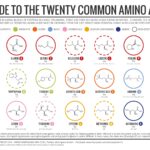Mechanobiology, the study of how mechanical forces and changes in cell and tissue mechanics influence development, physiology, and disease, is a rapidly growing field. This “hitchhiker’s guide” highlights selected publications demonstrating the diverse applications of FluidFM (Fluidic Force Microscopy) in advancing mechanobiological research. FluidFM allows for precise force measurements and manipulation at the single-cell level, making it a valuable tool for understanding the intricate interplay between mechanics and biology.
Generating and Functionalizing Bubbles for Biological Applications
FluidFM technology enables the generation and functionalization of bubbles with controlled size, opening new avenues for exploring their interactions with biological surfaces. A publication by Demi et al. (2021) in the Journal of Colloid and Interface Science demonstrates how FluidFM can be used to engineer bubbles for applications such as drug delivery and cell separation. This precise control over bubble properties and their interaction with cells holds significant promise for various biomedical applications.
Assessing Mature Intercellular Adhesion Forces
Intercellular adhesion plays a crucial role in various biological processes, including development, tissue regeneration, and disease progression. Understanding the forces that govern cell-cell interactions is essential for unraveling these complex processes. A study published in Scientific Reports by Sancho et al. (2017) introduces FluidFM as a powerful tool for assessing mature intercellular adhesion forces in a physiological setting. This method is particularly relevant to understanding biological processes in developmental biology, tissue regeneration, and diseases like cancer and fibrosis.
Optimizing Drug Efficacy and Overcoming Resistance
Drug resistance remains a significant challenge in cancer therapy. Researchers are constantly seeking new approaches to overcome resistance mechanisms and enhance drug efficacy. Garitano-Trojaola et al. (2019) in Blood demonstrated how FluidFM cell measurements can aid in optimizing drugs and identifying potential strategies to overcome resistance. Specifically, they found a new potential approach to overcome resistance to the Midostaurin drug in Acute Myeloid Leukemia and even increase the drug’s activity. This work highlights the potential of FluidFM in drug development and personalized medicine.
Stent Design Optimization through Cell Adhesion Measurements
Stents are commonly used to treat narrowed or blocked arteries. Optimizing stent design to promote endothelialization (the formation of a layer of endothelial cells on the stent surface) is crucial for preventing complications such as thrombosis. Potthoff et al. (2014) in Nano Letters employed FluidFM to measure cell adhesion to stent surfaces, providing valuable insights for stent design optimization. This research exemplifies how mechanobiological measurements can contribute to the development of improved medical devices.
Quantifying and Optimizing Bacterial Adhesion
Bacterial adhesion is a critical factor in various processes, including biofilm formation and infection. Understanding and controlling bacterial adhesion is essential in fields such as medicine, food safety, and industrial biotechnology. Hofherr et al. (2020) in PLOS ONE applied FluidFM to study bacterial adhesion to stainless steel, a common reactor material. They also presented a new method for optimizing measurement parameters and demonstrated that FluidFM provides comparable results to traditional single-cell force spectroscopy (SCFS). This study underscores the utility of FluidFM in quantifying and optimizing bacterial adhesion for various applications.
Characterizing Hydrophobic Adhesion Properties of Bacteria
The interactions between bacteria and their environment are often influenced by hydrophobic forces. Mittelviehfhaus et al. (2019) in The ISME Journal used a modular FluidFM approach to quantify the hydrophobic adhesion properties of 28 bacteria strains isolated from leaves. They brought colloidal, hydrophobic probes into contact with the isolated bacteria and conducted extensive single-cell force spectroscopy measurements. This study revealed a large range of hydrophobic adhesion forces among the bacterial members of the leaf microbiota and correlated these differences with bacterial retention in planta.
Characterizing Soft Materials for Tissue Engineering
3D printing has revolutionized many fields, especially tissue engineering. However, melt-electrowriting (MEW) of hydrogels, an important material in biomedicine, has been challenging. Nahm et al. (2019) in Materials Horizon discovered a way to unlock MEW with promising implications to directly print soft, yet resilient tissues. FluidFM, with its fast colloidal probe technique, played a crucial role in characterizing the printed material. This research highlights the versatility of FluidFM in characterizing soft materials for tissue engineering applications.
In conclusion, these selected publications showcase the diverse applications of FluidFM in mechanobiology, ranging from manipulating bubbles to characterizing soft materials. FluidFM’s ability to precisely measure and manipulate forces at the single-cell level makes it an invaluable tool for unraveling the complex interplay between mechanics and biology. As the field of mechanobiology continues to grow, FluidFM is poised to play an increasingly important role in advancing our understanding of life at the smallest scales.
